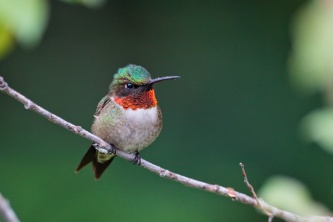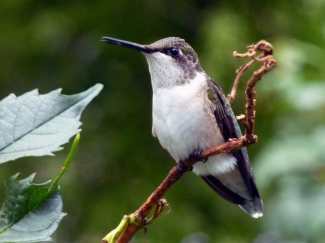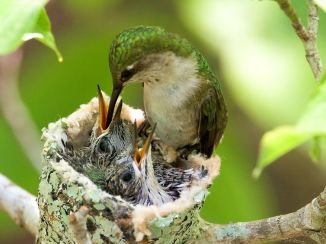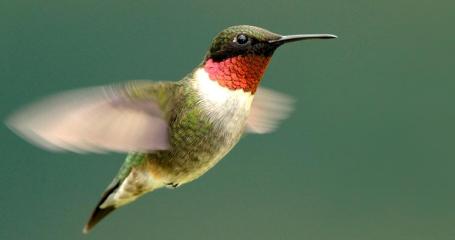One of my favorite backyard feeder birds is the Ruby-throated Hummingbird.

Male Ruby-throated Hummingbird
Ruby-throated Hummingbirds are scientifically known as Archilochus colubris. They can live anywhere between 5 and 9 years, and are between 3 to 4 inches in height as an adult. They are very small in weight which ranges anywhere from 0.07 to 0.21 oz. My favorite part about Hummingbirds is that they are such fast flyers. They can beat their wings up to 53 times a second and fly in an acrobatic style.

When they come up to the flowers and feeders it is almost like a treat because they are so small and fast, making it sometimes hard to see them. Ruby-throated hummingbirds live in woodland areas, but also frequent gardens where flowering plants are plentiful. They hover to feed on flowers, nectar, and sap. During this floral feeding process, the birds pollinate many plants. This make them important to our survival in some ways as well. Just like as with bees, we need our plant like to be pollinated so it is a good idea to encourage their existence, so to speak.
These tiny birds are omnivores, sometimes feeding on insects and spiders. An adult ruby-throated hummingbird may eat twice its body weight in food each day, which it burns up with the high metabolism necessary to sustain its rapid wing beat and energetic movements. Nestlings have shorter bills than adults. Their nest is thimble sized and is mostly made from spider web that stretches as the babies grow.

If you are in an area where these birds, and others in the hummingbird species live and migrate to, I encourage you to take a minute to enjoy these fragile and majestic creatures in your own backyard.
You can find a great deal on nectar here. I don’t recommend using any nectar that is colored, they have dyes in them that are not good for tiny tummies. You will also need a feeder if you dont have one already, and I recommend this one. There are several styles of feeders to choose from, however, and I am sure whichever you choose you will fall in love with when they start coming in and you get to watch them. It truly is an amazing sight.
